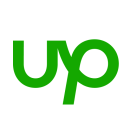
Miro’s Head of Enterprise Marketing has found that when it comes to encouraging work-life balance and preventing employee burnout, the most effective leadership strategy is actually the most obvious: addressing it.
In the past few months, almost everyone’s work routine has shifted. But for Suzanne Holloway and the following SF professionals, prioritizing their teams’ well-being has not. With that in mind, these senior directors, product professionals and tech leaders have been granting employees access to personalized health management platforms and reviewing team PTO quarterly to ensure there’s an ongoing focus on mental health.
Not only that, but they’ve heeded their own advice.
A few months back, Primer Co-founder Emmanuel Yera said he did a presentation for the company’s all-hands meeting while holding his 7-month-old. As he juggled responsibilities, he was able to rely on his peers’ flexibility.
“Finding time for the things I love has been key to keeping my mind in check,” Cori Allen, senior director of product at Rally Health, said.
Miro aims to help distributed teams get work done more easily. The company’s online whiteboard platform allows employees to create, collaborate and centralize communication for all their cross-functional work.
Head of Enterprise Marketing Suzanne Holloway spoke about why encouraging a “sustainable success” mindset is important.
What examples do you set as a leader of remote workers to ensure employees feel empowered to create and uphold healthy work-life boundaries?
It can certainly be difficult to achieve balance in what is best described as today’s “work-life soup.” I’ve found that the most effective thing to do as a leader is actually the most obvious: address it. It’s on us, as people managers, to establish trust and clear expectations. When leading remote teams, your own behavior can play a big role in achieving this.
For me, this means I talk openly about challenges. Second, I encourage the mindset of sustainable success. I love the episode of the “Below the Line” podcast on this topic. Finally, I demonstrate taking accountability for my well-being. For example, I have removed Slack from my phone, which eliminates the urge to clear that pesky red notification dot when I’m not in the headspace to do my best work or want to focus on my family instead.
I encourage my team to think about managing their well-being as they would any other important project.’’
If a remote employee feels burned-out, what’s the most important step you take to help them find balance?
I encourage my team to think about managing their well-being as they would any other important project. When they see something is slipping, I expect them to surface it to me and act on it. So, if and when these conversations happen, I’m glad they’ve taken the first proactive measure to solve it.
The first step I take is realigning expectations. Especially today, when everyone is experiencing so much personal uncertainty, providing clarity here can be a gift. I ensure they are focused on the right outcomes, reemphasize the importance of taking breaks and remind them they have my support. Sometimes, that’s all it takes. If needed, I will chase people down to take days off!
What are some specific perks or benefits your company offers remote workers to ensure they have the resources they need to be successful working remotely?
I’m lucky that Miro has always been a globally distributed team, so there’s so much in place to set everyone up for success. This includes an amazing onboarding program and educational resources for new employees, Zoom “speed meets” to put faces to names and lots of huddle boards in Miro to help everyone find the information they need.
More recently, Miro has made an added investment in employee well-being through a monthly stipend for lunches and a one-time reimbursement to improve our work-from-home setups. I’ve been most grateful for new employee resource groups that help “Mironeers” connect with one another. I lead one for “Miro Mamas,” which provided me with support and community when returning from maternity leave. Having these outlets and personal connections at work contributes to our overall happiness, which is the biggest ingredient in a healthy work-life soup.
Rally Health is dedicated to making it easier for individuals to take charge of their health. The digital health company enables employers to grant their workers access to personalized health management.
Senior Director of Product Cori Allen discussed the importance of setting boundaries and taking advantage of employee well-being resources. When she’s offline, she’s offline.
What examples do you set as a leader of remote workers to ensure employees feel empowered to create and uphold healthy work-life boundaries?
I have found it more important than ever to set and keep boundaries. I set hard stops in my day to ensure that I can keep up with my young children and keep balance. I also make sure that my teammates are aware that I am creating this space for myself, so they can be empowered to do the same with their day. Typically, this starts with making my calendar public to my team members with clear holds to get my kindergartener set up with a Zoom class or pick up my preschooler from school.
Finding time for myself and the things I love has been key to keeping my mind in check. I share stories of my life outside of work in conversation with my colleagues and reports and have been protective of my time off. When I take time off to decompress, I am offline and not available via email or Slack, and I expect that my reports do the same. Where there are blurred lines, it’s important to make sure that we don’t lose ourselves. Keeping a clear eye on what’s important and what can wait will be the path to trying to stay sane. That, and a little wine!
Where there are blurred lines, it’s important to make sure that we don’t lose ourselves.’’
If a remote employee feels burned-out, what’s the most important step you take to help them find balance?
First, I empathize. These days, it’s hard not to feel burned-out. There is a lot to manage in this world that seems to have flipped upside down. I have often used this as an opportunity to find common ground and learn more about them as a person.
Secondly, I offer support. Some have needed the encouragement to take time off. Others needed to stop and reflect on the work they are doing and find ways to optimize it. In this case, we typically talk through the work that is being done and what they might need an extra set of hands with. And then, we take action. This can come in the form of a plan, next steps or something else. I aim to ensure there is one less thing weighing them down.
Additionally, I have taken this opportunity to highlight the tools and benefits that we have at our disposal as employees of a digital health company. There are mental health support apps and an employee assistance program, among other tools, to support them in taking a step back and recognizing what’s important.
What are some specific perks or benefits your company offers remote workers to ensure they have the resources they need to be successful working remotely?
Rally has been very cognizant about ensuring employees feel supported in this new world of remote work. We have an ergonomic home office set-up program to ensure that home work spaces are as comfortable as possible. Also, our Rally team has been very supportive of purchasing non-work things to make sure we are keeping ourselves healthy and happy. They have encouraged physical self-care by running “Rally Rumble” group challenges, using our own platform as a space for some healthy competition.
I have felt inspired by our well-being team and the prompts sent through Slack throughout the day to stretch or breathe deeply. And I have felt supported with tools that ensure I am taking care of myself mentally such as the “Rally Coach” programs for meditation and the Ginger app. Although it is difficult to maintain the same type of social interactions that we had before the pandemic, I feel thankful to have the teammates I do at Rally. We can still maintain our senses of humor, despite the seemingly never-ending series of Google hangouts and Webex meetings.
Upwork aims to make it easier for businesses to find remote, talented professionals from anywhere in the world. Their platform allows businesses to post projects online, connect with verified professionals and easily track projects and collaborate as a team.
Employee Enablement Kelsi Rohrmann discussed how the company focuses on transparency between employees and managers and how they prioritize workers’ physical and mental health.
What examples do you set as a leader of remote workers to ensure employees feel empowered to create and uphold healthy work-life boundaries?
Communication is key to make remote work successful. We strongly encourage employees to set working hours on their Google calendar and adhere to them as well as block their calendars during times they are taking care of family responsibilities, focusing on heads-down work or even just taking a lunch break. It’s important to be transparent with your team and manager about your availability, and in turn, we expect our employees to respect others’ schedules.
In a company-wide sense, we have implemented what we call “customer Wednesdays.” This means that every Wednesday, there should be no internal meetings, allowing time for our employees to focus on external, customer-facing work or heads-down time for our non-customer facing teams.
Communication is key to make remote work successful.’’
If a remote employee feels burned-out, what’s the most important step you take to help them find balance?
The first step to addressing employee burnout is to be proactive versus reactive. We encourage our managers to do this in a couple of ways. First, they can review team PTO quarterly to see if there are people who haven’t been utilizing our unlimited PTO benefit. Second, they can check in with team members on a personal level at the start of one-on-ones, supporting them in taking time off and helping them identify other team members that might have the bandwidth to step in. Last but not least, managers can lead by example by taking PTO themselves.
For employees in need of balance, we help them prioritize their mental and physical health by working with them to identify which tasks and projects are a priority and which ones can wait. We also encourage them to utilize the Upwork platform to find remote professionals to help with project work and ease the feeling of taking on too much.
What are some specific perks or benefits your company offers remote workers to ensure they have the resources they need to be successful working remotely?
We offer each employee an equipment stipend, so they can purchase anything they may need for their home office, from monitors and headphones to houseplants and decorative items. We want them to have what they need to make their work-from-home environment comfortable and functional.
Employees who wish to work outside of their homes can take advantage of a co-working space benefit. Other benefits include access to ModernHealth, a mental health platform for employees and their dependents, as well as wellness and cell phone and internet reimbursements.
At Knotel, Associate Director of Technology Ayla Koenig emphasizes the importance of spending time away from one’s computer and how strong work-from-home setups can help prevent burnout. Can’t currently travel? It might be time for a staycation.
What examples do you set as a leader of remote workers to ensure employees feel empowered to create and uphold healthy work-life boundaries?
The tech team has an extremely flexible work schedule. We have team members spread across multiple time zones and continents. On top of that, many of us are dealing with the challenge of caregiving during the pandemic. My goal has been to empower each person with the support and connection they need to get their work done on a schedule that works for them.
When we are online, the technology team uses Discord, a free and secure voice and text server. It’s become the platform for our team to collaborate, share or just catch up. You can easily see who is currently online, and it helps the team respect everyone’s working hours. I always log off at the end of my working day and avoid responding to messages if they can wait. I want to set the example that you do not need to be available at all hours of the day.
If a remote employee feels burned-out, what’s the most important step you take to help them find balance?
My No. 1 suggestion is to take time off. Even though many people currently can’t travel, make it a “staycation.” Get outside, find a hobby or just do nothing, as long as you are getting away from your computer. Turn on an “out of office” email response, and turn off your notifications from email and Slack. It’s important to feel confident that the team has your back and can handle anything that comes up in your absence. Finally, make it at least a couple days off. It can take that long to adjust from the always-on mindset.
Get outside, find a hobby or just do nothing, as long as you are getting away from your computer.’’
What are some specific perks or benefits your company offers remote workers to ensure they have the resources they need to be successful working remotely?
Knotel has an unlimited vacation policy and encourages employees to use it. The policy takes away the stress of saving vacation time for important events or holidays. Instead, it lets the team take a day whenever it’s needed. During the summer, Knotel also offers “summer Fridays,” which means the workday ends at noon. It’s a great push to start the weekend early. We also provide team members with the tech they need to create a great work station at home. Whether that’s a special computer, monitor or keyboard, everyone should have the tools they need to be just as productive at home as they are in the office. This way, they don’t feel like the same tasks take them longer at home and forces them to work later.
At Primer, Director of Product Engineering Emmanuel Yera shared how the machine intelligence company encourages employees to end their days at a designated time, even if it means cutting meetings short. He also believes that to be successful at work, you need to be set up for work.
What examples do you set as a leader of remote workers to ensure employees feel empowered to create and uphold healthy work-life boundaries?
A couple of things: Use what’s at your fingertips, such as applications like Clockwise, and set your calendar up for lunch breaks, downtime or parenting time, and actually use it. Decline meetings if you need to. Set a proper working schedule. Decide to work until 5 p.m. and end your day promptly at the designated time, even if it means ending meetings early. Lead by example. Keep an eye on your teammates, and remind them to ask themselves if this is something they can do tomorrow. Also, encourage them to take PTO, and make sure they use it.
If a remote employee feels burned-out, what’s the most important step you take to help them find balance?
Commend them for speaking up. Burnout is a real thing, and so is Zoom fatigue. There is a fine line between work and home right now. Identify the issue of why you feel burned out. After big work pushes, people generally crash. Don’t feel bad that you aren’t working those 12-hour days anymore and revert back to your normal 8-hour days. Diagnose the reasons behind your burnout, and then figure out a new way to navigate with less workload and less stressors. And ask yourself if it makes sense to take time off. We like to have team outings, and now, we encourage taking off for a day, or even one or a couple of weeks. As a leader, I try to be flexible and step in for our teams. For example, I may lead an interview in place of someone who has been doing them a lot. We’re all in this together.
After big work pushes, people generally crash.’’
What are some specific perks or benefits your company offers remote workers to ensure they have the resources they need to be successful working remotely?
To be successful at work, you need to be set up for work, whether that means bringing monitors home or even just buying a nice desk chair. Primer has a book allowance and other allowances, so employees feel supported and continue to succeed. Our parents Slack channel isn’t necessarily a perk, but it provides a place for those who have kids to say, “I’m not the only one with a screaming child.”
A few months back, I did a presentation for the company-wide, all-hands meeting while holding my 7-month-old, because that’s how we need to roll now.

















